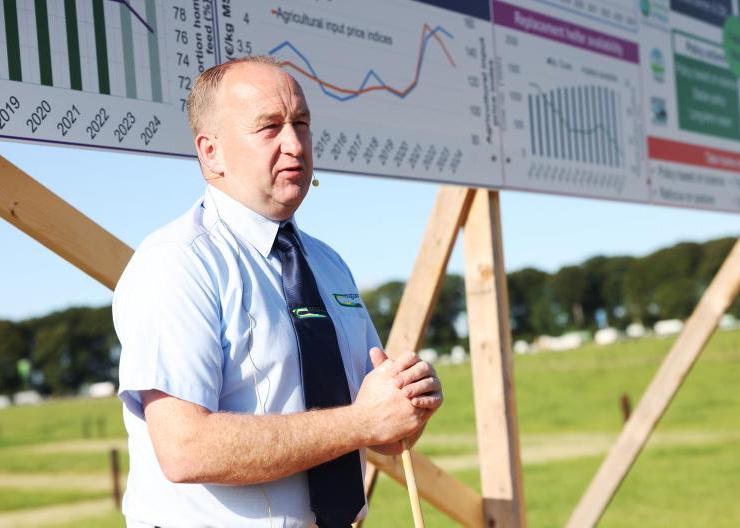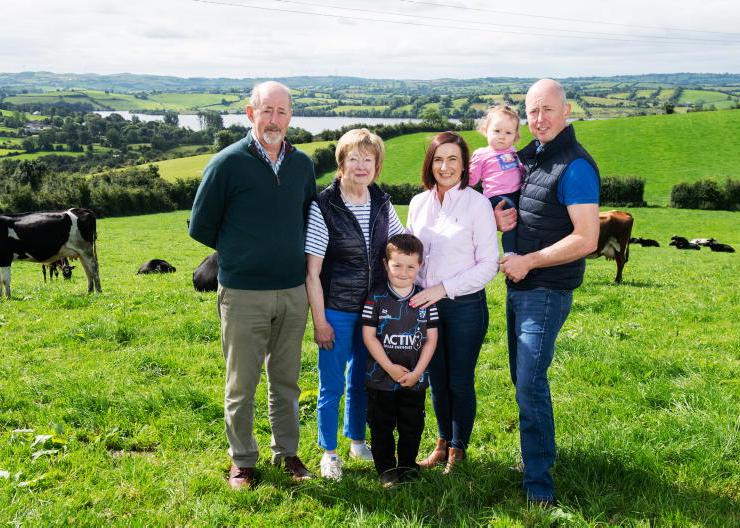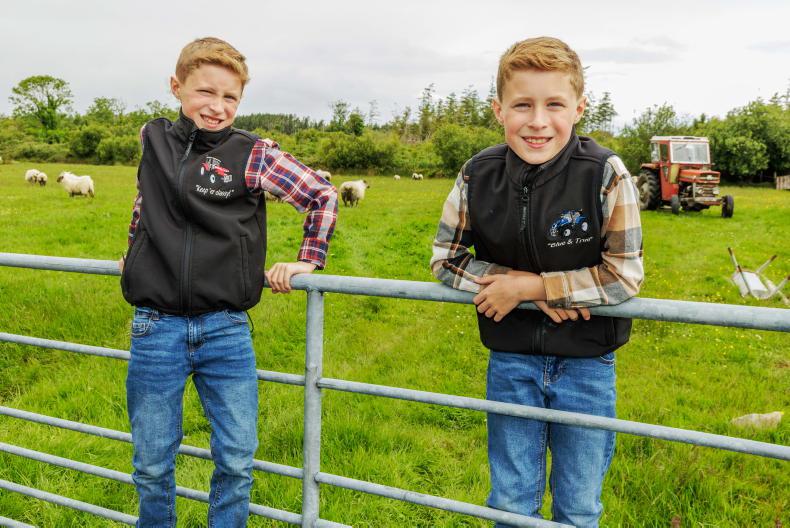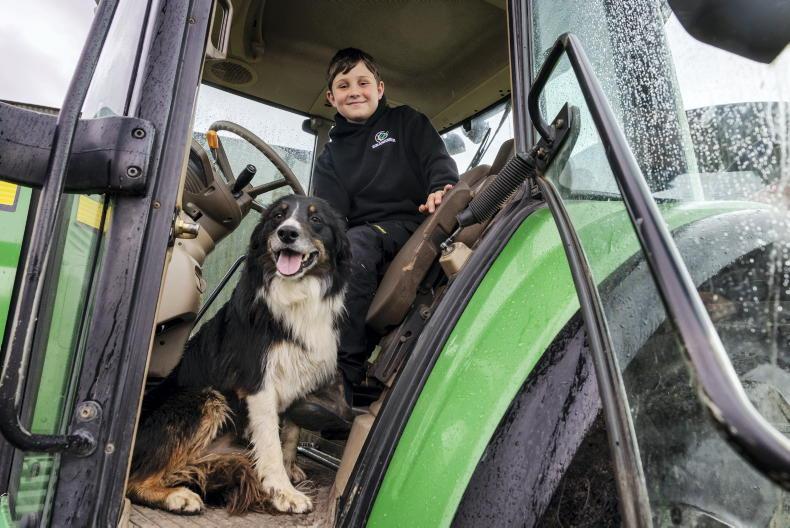Ireland is world renowned for its grass growing ability and our warm damp climate means farmers can capitalise on a long grass growing season across the whole country. Once soil temperatures start to reach a consistent 5-6°C in spring time, grass will start to grow. On a lot of farms, grass will continue to grow at a very low level during the winter months.
Getting the basics right
You can make grassland management very complicated, but it doesn’t have to be. The honours class will talk about computer programmes, rising plate meters, golf ball grazing and residuals. To start, we don’t need any of this terminology, we just need to understand how the grass plant grows.
During the grazing season, it takes on average about three weeks for the grass plant to grow into a sward that is ideal for grazing, a young sward full of leafy material. Going in any sooner means you are not getting the maximum efficiency of the grass plant in terms of nutrients used to grow the grass.
Letting the grass grow longer than three weeks will mean there will be a higher proportion of stem in the grass plant. Stemmy material is harder to digest, so isn’t as good for weight gain as young leafy grass. Re-growths will also be a lot slower where a stemmy sward is being grazed.
So, where do the maltesers and porridge come into it? I heard an adviser at a farm walk one day use maltesers and porridge as an example of good and bad grassland management. The thinking is that when you open a packet of maltesers, you keep nibbling away until they are all gone.
This is the same with young leafy grass in a paddock. Cattle will consume a higher amount of this and in turn will put on more weight, similar to someone who consumes more than their fair share of maltesers.
The stemmy grazing material is similar to porridge. If you consume a large portion of porridge in the mornings, the chances are you will feel full and won’t need to eat anything for a while.
You shouldn’t put on a lot of weight on this diet either. The stemmy material is the same as this, it will fill an animal up, but it won’t put on a lot of weight. So when grazing grass, aim for the maltesers and not the porridge.
Grazing infrastructure
Good grassland management starts off with good grazing infrastructure. By good, I don’t mean an all bells and whistles job of timber posts and sheep wire.
Good infrastructure might just mean being able to split a paddock into a smaller area to suit a grazing group by using an electric fence.
Drinker and water supply position is key to this. The best place for a drinker is in the middle of a field, so the field can be split a number of different ways to aid grassland management. All too often, the drinker is positioned inside the gateway to the field, minimising options for further sub division.
Measuring grass
Sometimes, people get too caught up with the minute detail of things, rather than looking at the bigger picture. All you need is a grass stick or grass welly with the centimetres marked up along the side.
When walking through a paddock, take an average height of the grass and write it down. After a few walks, your eye will get trained in and you won’t need to use the stick or welly. Every centimetre of grass contains roughly 250kg of dry matter (DM).
So, if your paddock measures 10cm, that means there is 6cm available to eat because animals generally graze down to 4cm. That means there is 1,500kg/DM/ha in this paddock. If there was 2ha (5ac) in this paddock, that means there is 3,000kg of grass to eat in this paddock.
An animal will eat 2% of its body weight in a day so that means a 400kg heifer will consume 8kg of grass DM a day. Fifty heifers would consume 400kg of grass in a day so it would take 7.5 days to eat this field with 50 heifers. Going back to the graze in three day principle, that means this field would be better to be split in two to graze each half in three days. Grassland management is all about practice and learning from your mistakes. Give it a go and watch your cattle grow.
Good grazing infrastructure is key to good grassland management. A paddock system with drinkers positioned to aid further sub division if needed is best.Aim to grow grass in three weeks and graze that grass within a three day window to maximise liveweight gain and to maximise the amount of grass you are growing.Aim to go into paddocks at 10cm in grass height and come out of those paddocks at 4cm. This will ensure quality is maintained in the sward during the grazing season.Where grass gets ahead or beyond 10cm in height, the best option is to take these strong paddocks out as baled silage. If you graze these strong paddocks, you may need to top afterwards and this will delay regrowths.
Ireland is world renowned for its grass growing ability and our warm damp climate means farmers can capitalise on a long grass growing season across the whole country. Once soil temperatures start to reach a consistent 5-6°C in spring time, grass will start to grow. On a lot of farms, grass will continue to grow at a very low level during the winter months.
Getting the basics right
You can make grassland management very complicated, but it doesn’t have to be. The honours class will talk about computer programmes, rising plate meters, golf ball grazing and residuals. To start, we don’t need any of this terminology, we just need to understand how the grass plant grows.
During the grazing season, it takes on average about three weeks for the grass plant to grow into a sward that is ideal for grazing, a young sward full of leafy material. Going in any sooner means you are not getting the maximum efficiency of the grass plant in terms of nutrients used to grow the grass.
Letting the grass grow longer than three weeks will mean there will be a higher proportion of stem in the grass plant. Stemmy material is harder to digest, so isn’t as good for weight gain as young leafy grass. Re-growths will also be a lot slower where a stemmy sward is being grazed.
So, where do the maltesers and porridge come into it? I heard an adviser at a farm walk one day use maltesers and porridge as an example of good and bad grassland management. The thinking is that when you open a packet of maltesers, you keep nibbling away until they are all gone.
This is the same with young leafy grass in a paddock. Cattle will consume a higher amount of this and in turn will put on more weight, similar to someone who consumes more than their fair share of maltesers.
The stemmy grazing material is similar to porridge. If you consume a large portion of porridge in the mornings, the chances are you will feel full and won’t need to eat anything for a while.
You shouldn’t put on a lot of weight on this diet either. The stemmy material is the same as this, it will fill an animal up, but it won’t put on a lot of weight. So when grazing grass, aim for the maltesers and not the porridge.
Grazing infrastructure
Good grassland management starts off with good grazing infrastructure. By good, I don’t mean an all bells and whistles job of timber posts and sheep wire.
Good infrastructure might just mean being able to split a paddock into a smaller area to suit a grazing group by using an electric fence.
Drinker and water supply position is key to this. The best place for a drinker is in the middle of a field, so the field can be split a number of different ways to aid grassland management. All too often, the drinker is positioned inside the gateway to the field, minimising options for further sub division.
Measuring grass
Sometimes, people get too caught up with the minute detail of things, rather than looking at the bigger picture. All you need is a grass stick or grass welly with the centimetres marked up along the side.
When walking through a paddock, take an average height of the grass and write it down. After a few walks, your eye will get trained in and you won’t need to use the stick or welly. Every centimetre of grass contains roughly 250kg of dry matter (DM).
So, if your paddock measures 10cm, that means there is 6cm available to eat because animals generally graze down to 4cm. That means there is 1,500kg/DM/ha in this paddock. If there was 2ha (5ac) in this paddock, that means there is 3,000kg of grass to eat in this paddock.
An animal will eat 2% of its body weight in a day so that means a 400kg heifer will consume 8kg of grass DM a day. Fifty heifers would consume 400kg of grass in a day so it would take 7.5 days to eat this field with 50 heifers. Going back to the graze in three day principle, that means this field would be better to be split in two to graze each half in three days. Grassland management is all about practice and learning from your mistakes. Give it a go and watch your cattle grow.
Good grazing infrastructure is key to good grassland management. A paddock system with drinkers positioned to aid further sub division if needed is best.Aim to grow grass in three weeks and graze that grass within a three day window to maximise liveweight gain and to maximise the amount of grass you are growing.Aim to go into paddocks at 10cm in grass height and come out of those paddocks at 4cm. This will ensure quality is maintained in the sward during the grazing season.Where grass gets ahead or beyond 10cm in height, the best option is to take these strong paddocks out as baled silage. If you graze these strong paddocks, you may need to top afterwards and this will delay regrowths.










SHARING OPTIONS